21, He/Him/His, lover of all things space, aviation, alt music, film, and anime
255 posts
Latest Posts by thebryanscout - Page 4
Leap Day…Why Does It Exist?
Once every four years, an extra calendar day is added: a leap day. But why?
The reason for adding leap days to the calendar is to align the calendar year with the actual year – which is defined by the time it takes Earth to circle the sun. It is equal to 365 days, 5 hours, 48 minutes and 46 seconds, or 365.24219 days.

If all calendar years contained exactly 365 days, they would drift from the actual year by about 1 day every 4 years. Eventually, July would occur during the northern hemisphere winter! Wouldn’t that be weird?
To correct (approximately), we add 1 day every 4 years…resulting in a leap year.
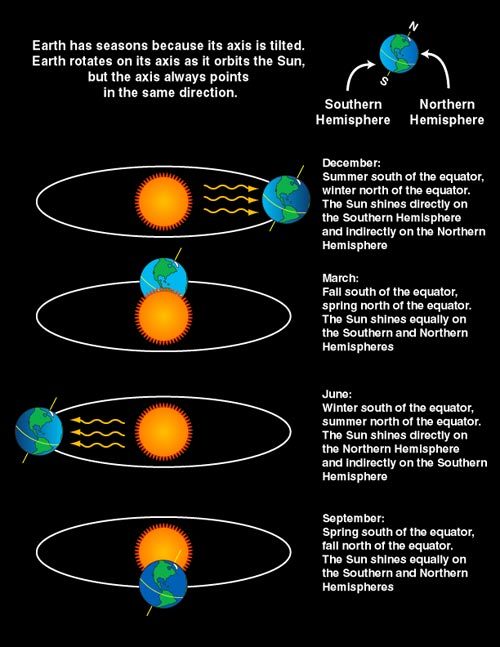
By making most years 365 days but every fourth year 366 days, the calendar year and the actual year remain more nearly in step.
Make sure to follow us on Tumblr for your regular dose of space: http://nasa.tumblr.com

Straight Outta Gallifrey


the impossible astronaut will rise from the deep and strike the timelord dead

Doctor Who buttons 1.25" / 32mm pinback button/badge by BlackUmbrellaInd (1.25 USD) http://ift.tt/1W3P5kL

“That’s our new frontier out there, and it’s everybody’s business to know about space.”
—Christa McAuliffe


Aggression causes new nerve cells to be generated in the brain
A group of neurobiologists from Russia and the USA, including Dmitry Smagin, Tatyana Michurina, and Grigori Enikolopov from Moscow Institute of Physics and Technology (MIPT), have proven experimentally that aggression has an influence on the production of new nerve cells in the brain. The scientists conducted a series of experiments on male mice and published their findings in the journal Frontiers in Neuroscience.
Researchers from the Institute of Cytology and Genetics of the Siberian Branch of the Russian Academy of Sciences (ICG SB RAS), MIPT, Cold Spring Harbour Laboratory, and Stony Brook University and School of Medicine studied the changes that occurred in the brains of mice demonstrating aggressive behaviour, which attacked other mice and won in fights. After a win, these mice became even more aggressive, and new neurons appeared in their hippocampus - one of the key structures of the brain; in addition to this, in mice that were allowed to continue fighting certain changes were observed in the activity of their nerve cells.
Dmitry A. Smagin, June-Hee Park, Tatyana V. Michurina, Natalia Peunova, Zachary Glass, Kasim Sayed, Natalya P. Bondar, Irina N. Kovalenko, Natalia N. Kudryavtseva, Grigori Enikolopov. Altered Hippocampal Neurogenesis and Amygdalar Neuronal Activity in Adult Mice with Repeated Experience of Aggression. Frontiers in Neuroscience, 2015; 9 DOI: 10.3389/fnins.2015.00443
Mouse hippocampal neurons labeled with GFP. Imaged with a 20X objective on Zeiss 710, Dr. Fu-Ming Zhou

European Scientists Want to Shoot a Giant Bullet at Europa
Europa has been calling to astrobiologists for years. Although its surface is frigid and bombarded with radiation, inside it contains a vast liquid ocean that might be capable of supporting life. NASA is planning to launch an orbiter and lander to Europa in 2022, and during today’s meeting of NASA’s Outer Planets Assessment Group, scientists expressed interest in getting the European Space Agency (ESA) involved in the mission.
The most exciting proposal is for ESA to build a projectile that could penetrate a few meters below the surface of the icy Jovian moon, to learn about its geophysics and search for hints about the moon’s ability to support life.
Read about the full plan here.
Image Credit: Geraint Jones

TURDIS

Look, It’s Doctor Poo
State of NASA
Over his tenure, President Obama has now invested $147 billion in America’s space program. Our elected leaders, on a bipartisan basis, have chosen to make this investment in our Agency, because they believe in our Journey to Mars and recognize that investments in NASA’s present are investments in America’s future.
Because the State of our NASA is strong, President Obama is recommending a $19 billion budget for the next year to carry out our ambitious exploration and scientific discovery plans. Here are the areas in which we’ll continue to invest:
Solar System and Beyond

As we explore our solar system and search for new worlds, we look to answer key questions about our home planet, neighboring planets in our solar system and the universe beyond.
Journey to Mars

We’re developing the capabilities needed to send humans to an asteroid by 2025 and Mars in the 2030s. Mars is a rich destination for scientific discovery and robotic and human exploration as we expand our presence into the solar system. Its formation and evolution are comparable to Earth, helping us learn more about our own planet’s history and future.
International Space Station

Earth Right Now

We use the vantage point of space to increase our understanding of our home planet, improve lives and safeguard our future. Our Earth science work also makes a difference in people’s lives around the world every day.
Technology Drives Exploration

Sustained investments in our technology advance space exploration, science and aeronautics capabilities. We seek to improve our ability to access and travel through space; land more mass in more locations throughout our solar system; live and work in deep space and on planetary bodies; build next generation air vehicles, and transform the ability to observe the universe and answer profound questions in Earth and space sciences.
Aeronautics

Thanks to advancements in aeronautics developed by NASA, today’s aviation industry is better equipped than ever to safely and efficiently transport all those passengers to their destinations.

The President’s FY 2017 budget provides $790 million to our Aeronautics Research Mission Directorate. This investment will accelerate aviation energy efficiency, advance propulsion system transformation and enable major improvements in aviation safety and mobility. The future of flight will: utilize greener energy, be half as loud, use half the fuel and will create quieter sonic booms.
State of NASA Social

Today, we have opened our doors and invited social media followers and news media to an in-person event, at one of our 10 field centers. Guests will go on a tour and see highlights of the work we’re doing. You can follow along digitally on Twitter: https://twitter.com/NASASocial/lists/state-of-nasa-all1.
Check our Twitter Moment HERE.
Did you miss NASA Administrator Bolden’s remarks? You can watch a full recap HERE.
For all budget related items, visit: http://www.nasa.gov/news/budget/index.html
Make sure to follow us on Tumblr for your regular dose of space: http://nasa.tumblr.com



1975 NASA concept art by Don Davis takes us to a future space colony in the form of a “Stanford torus” that can house tens of thousands of humans. It was first proposed in a 1975 NASA study at Stanford University where experts gathered to speculate on designs for future space habitats. Using centrifugal force, a doughnut-shaped torus structure that is 1.8 km in diameter could rotate once per minute to provide between 0.9g and 1.0g of artificial gravity on the inside of the outer ring. A system of mirrors would direct sunlight to the interior to make it the well-lit paradise you see here. (NASA)



NASA’S NEW SPACE TOURISM POSTERS ARE OUT OF THIS WORLD
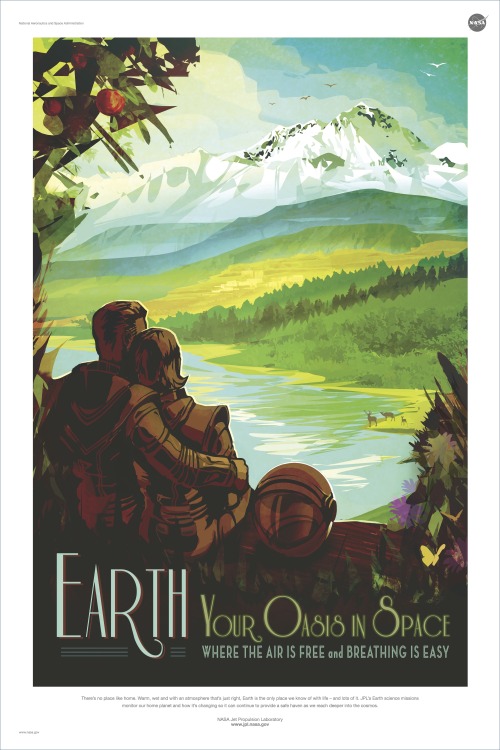
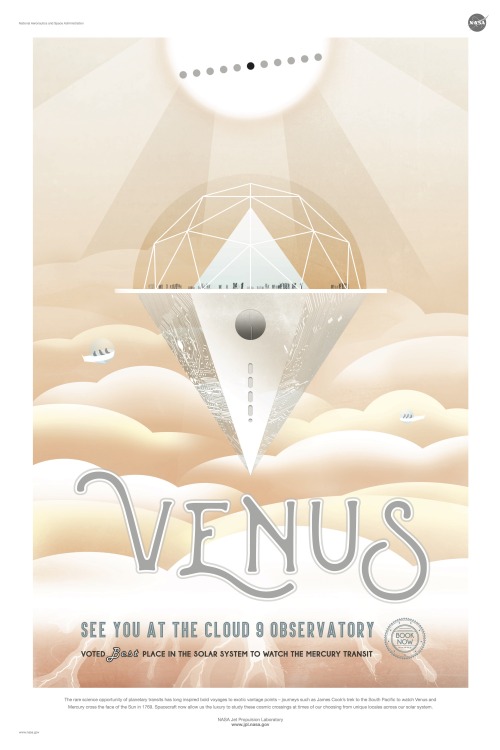
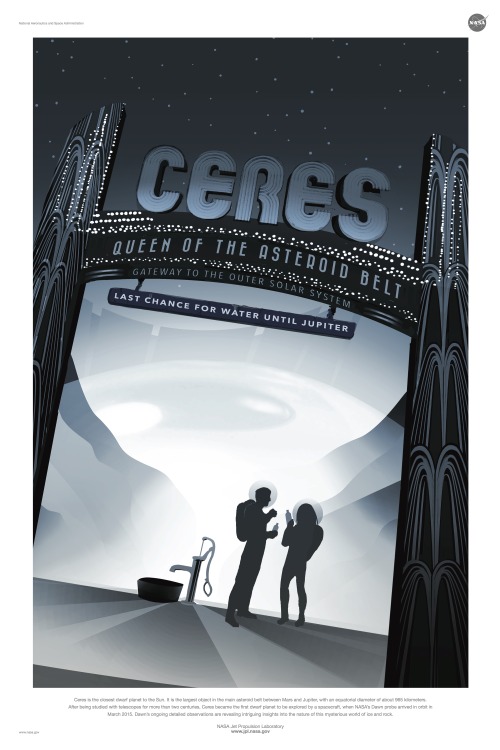
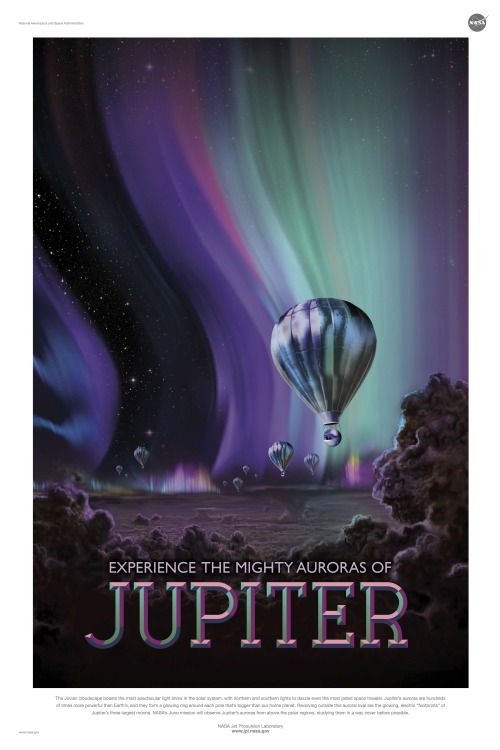


I officially bow down to the artists working at NASA’s Jet Propulsion Laboratory (JPL). Also, thanks to NASA for recognizing and celebrating the power of art like this.
These STUNNING posters can all be downloaded directly from JPL (in hi-res). And their mere existence is reason enough for a new Wednesday theme: World Tour Wednesday.
Stay tuned for some more awesome posters that are out of this world* and worth touring
- Summer
*too easy?



Why Would He Do That?

You know you’ve fucked up when…
Jherek Bischoff, Amanda Palmer, and Neil Gaiman cover David Bowie’s “Space Oddity” on the marvelous orchestral tribute EP, Strung Out In Heaven (learn more). Artwork by Sarah Beetson.
Bischoff also composed this beautiful instrumental rendition of “Life On Mars?” (artwork by Félix Marqués)
Strung Out In Heaven: A Bowie String Quartet Tribute by Jherek Bischoff

Two of my favorite movies.

I don’t use this blog for politics, but will make an exception in this case,
7 Sports Astronauts Love Without Gravity (Including Football)
Astronauts onboard the International Space Station spend most of their time doing science, exercising and maintaining the station. But they still have time to shoot hoops and toss around a football.
From chess to soccer, there’s a zero-gravity spin to everything.
1. Baseball



Baseball: America’s favorite pastime. JAXA astronaut, Satoshi Furukawa shows us how microgravity makes it possible to be a one-man team. It would be a lot harder to hit home runs if the players could jump that high to catch the ball.
2. Chess
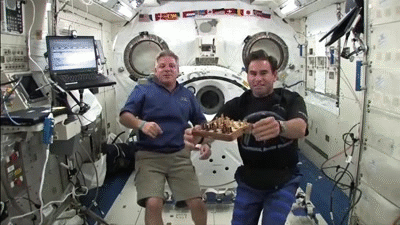
Yes, it’s a sport, and one time NASA astronaut Greg Chamitoff (right) played Earth on a Velcro chess board. An elementary school chess team would pick moves that everyone could vote for online. The winning move would be Earth’s play, and then Chamitoff would respond. About every two days, a move would be made. But who won the historic Earth vs. Space match? Earth! Chamitoff resigned after Earth turned its pawn into a queen, but it was game well played.
3. Soccer

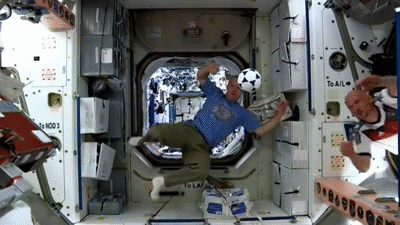
NASA astronaut Steve Swanson put a new spin on soccer by juggling the ball upside down. However, he might not have considered himself upside down. On the space station, up and down are relative.
4. Gymnastics

NASA astronauts usually sign off their videos with a zero-gravity somersault (either forwards or backwards). But astronauts are also proficient in handstands, flips and twists. The predecessor to the International Space Station, the Skylab, had the best space for the moves. The current space station is a bit tight in comparison.
5. Basketball

Objects that aren’t heavy don’t move very well on the space station. They kind of just float. It’s like Earth, but exaggerated. For example, on Earth a beach ball wouldn’t go as far as a basketball. The same is true in space, which is why playing with a basketball in space is more fun than playing with a beach ball.
6. Golf

People talk about hitting golf balls off skyscrapers, but what about off the International Space Station? While golf isn’t a normal occurrence on the station, it’s been there. One golf company even sent an experiment to the station to find out how to make better golf clubs.
7. Football

Zero gravity doesn’t make everything easier. Astronauts need to relearn how to throw things because their brains need to relearn how to interpret sensory information. A bowling ball on the space station no longer feels as heavy as a bowling ball on Earth. When astronauts first throw things on the space station, everything keeps going too high. That would put a wrench in your spiral for a couple of months. But once you adjust, the perfect spiral will just keep spiraling!
Make sure to follow us on Tumblr for your regular dose of space: http://nasa.tumblr.com
Time Lords of Gallifrey, Daleks of Skaro, I serve notice on you all. Too long have I stayed my hand. No more. Today you leave me no choice, today this war will end. No more. No more.
The War Doctor
Fascinating

Mike McDonnell (on matters of connectivity)
I always thought it was weird that the GeoComTex employees in this episode wore the American flag on the wrong shoulder considering the star placement.

Five Episodes: Dalek
Okay I KNOW I'm not the only one who notices this.

See this guy?

This is The Brain, a nasty DC villain who shows up in Teen Titans. Does anyone else think that the brain looks like the secret love child of: The Grim Reaper:

And a fucking DALEK!?
Reblog if you see it
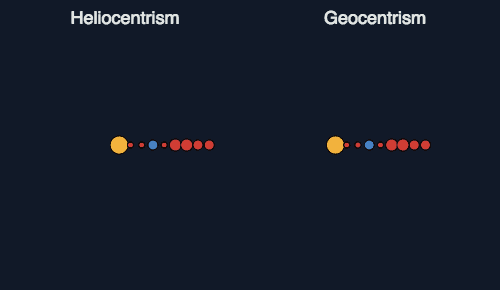
The difference between an easy model and a complicated one.
Heliocentrism and geocentrism

A great crew photo for STS-125.
Good ol’ Rory


The launch of Discovery, with the Columbia prepping for the next mission. One of the rare times both launchpads were occupied at the same time.